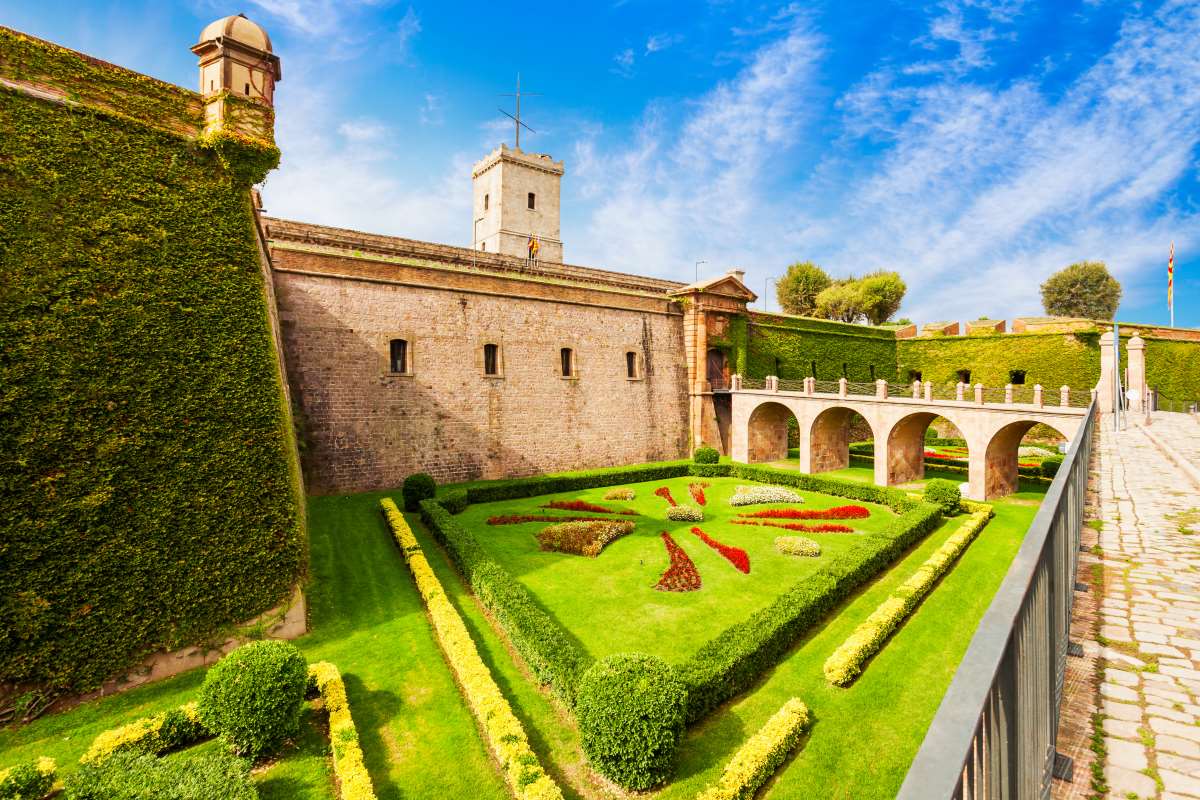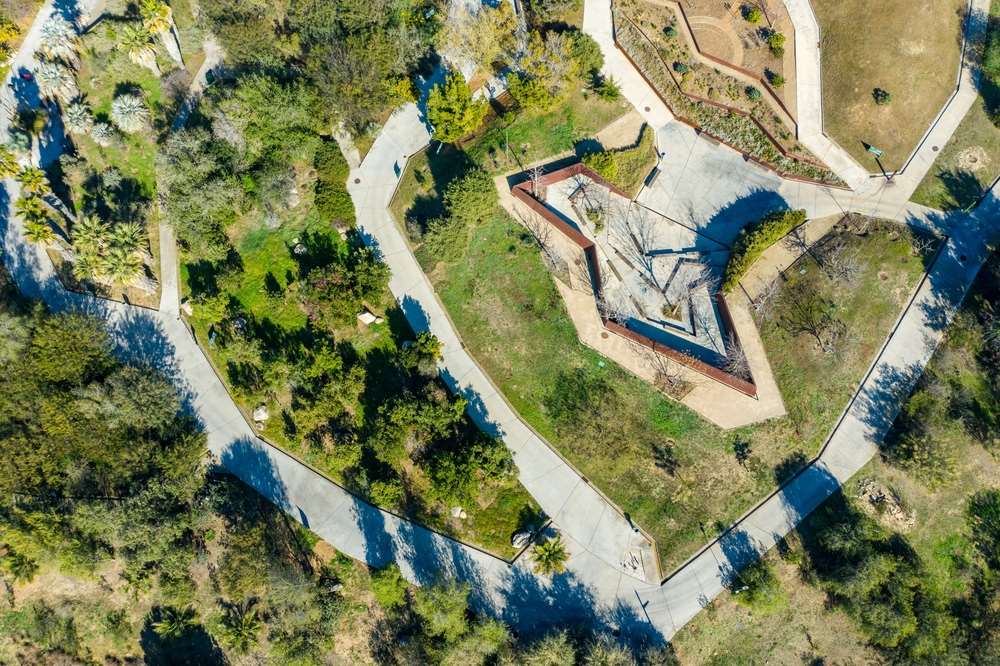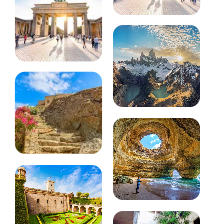Visit Montjuïc Park in Barcelona

Situated on the Montjuïc hill, 213 metres above sea level, the area is known for its wealth of varied tourist attractions following the 1929 World Exhibition.
From this date onwards, palaces, pavilions, parks, botanical gardens and areas dedicated to sport and culture began to appear. You wouldn’t expect to find such a density of monuments and exhibitions in the heights of Barcelona, and yet there you have it.
Parc Montjuïc is a unique spot that is not to be missed. What’s more, you can take the funicular or cable car up to the very top of the hill, adding a touch of the exotic to your trip while enjoying spectacular views over Barcelona.
What to see and do in Barcelona’s Parc Montjuïc?
Every year, tourists and locals flock to discover all the wonders of this extraordinary park, which combines culture, sport, history, local crafts and architecture. An all-in-one site!
And to make matters worse, the views are splendid and the food is top-notch. Whether you’re in a group, with family or friends, there’s something for everyone.
1 – The Joan Miró Foundation
The painter Joan Miró was a key figure in Spain’s contemporary art movement, particularly surrealism, and his talent has captivated the whole world. Born in Barcelona and very attached to the city, it was only natural that a museum should be dedicated to him. This foundation exhibits most of his works, including paintings, collages, sculptures, engravings, lithographs and ceramics….
2 – The National Art Museum of Catalonia
Discover Catalan art in all its splendour, with a rich and varied collection spanning the centuries and styles. World-famous artists such as Picasso and Miro are in the limelight, as are anonymous artists who have their place here.
The ground floor features Roman, Gothic, Renaissance and Baroque works.
The1st floor displays modern art.
This museum is located in the National Palace, built in 1929 for the World Exhibition, with a view of the 4 columns and the fountains of Montjuïc.
Practical info: admission is free every Saturday after 3pm, and every 1st Sunday of the month.
3 – Caixa forum
This museum houses a large collection of modern art, as well as regularly changing temporary exhibitions. Concerts and film screenings are also part of the activities on offer at this museum. Admission costs €4.
4 – Montjuïc Castle
This military camp, built in 1640, dominates Barcelona, offering an unbeatable view of the city. Magnificent gardens surround the castle and it is transformed into an open-air cinema in summer. Once a place of imprisonment and torture (during Franco’s dictatorship), a museum retraces this painful era. Admission €5, free for under-16s and on Sundays after 3pm, as well as every 1st Sunday of the month.
5 – The Mies van der Rohe pavilion
A pavilion with a very modern architecture, based on glass, steel and different types of marble with perfect symmetry. Exhibitions, conferences, debates and other cultural events are held at the pavilion throughout the year. Admission is €5, free for children under 16.
6 – The Spanish village or poble espanyol
Take a tour of Spain in this village, which features no fewer than 177 full-scale monuments inspired by all the regions of Spain. Architecture, contemporary art, crafts, commerce, gastronomy and traditions, discover Spain by visiting this extraordinary village. Ceramics, glass, leather, jewellery… Craftsmen make unique pieces before your very eyes. A museum exhibits works of contemporary art by the likes of Picasso, Dalí and Miró. A garden and a viewpoint overlooking the city of Barcelona round off your visit. And of course there are bars and restaurants ready to welcome you and help you discover the local gastronomy. Admission €13, free for children under 4.
7 – The Magic Fountain
A fabulous show combining light, music and the movement of water, with no fewer than 50 variations.
8 – The botanical garden
5 regions of the world are represented by the vegetation in this garden (Australia, Chile, California, South Africa and the Mediterranean). 1,500 species of plants and trees.
9 – Barcelona Olympic Stadium
Built in 1927, it was renovated in 1989 to host the Olympic Games. It houses a museum on the history of sport and Olympic thinking, as well as a park where a clever combination of technology and virtual reality lets you try your hand at several Olympic sports.
How do I visit Barcelona’s Parc Montjuïc?
Barcelona’s Parc Montjuïc is a popular spot for tourists. The best time to visit is in the morning, preferably during the week, to avoid the crowds.
This is a huge site, so allow at least a day to visit it, or even 2 if you don’t want to miss anything. If you can only devote a day or a half to the park, select the priority sites according to what attracts you most, without forgetting to take into account the distance between each site.
To save time during your visit, we recommend that you start at the top of the Park, arriving by cable car, and take your visits step by step on the way down.
If you book your tickets online, you may be able to take advantage of certain discounts, so don’t hesitate to consult the various websites of the exhibitions and monuments in Parc Montjuïc.
How do I get to Parc Montjuïc in Barcelona?
Barcelona’s Parc Montjuïc has no private parking spaces for cars, so it’s best to get there by public transport.
By metro
Line 1 (red), Line 2 (purple), Line 3 (green) for those who don’t mind walking, this last line is a long way from the park.
By bus
Buses 13, 50, 55 and 150 stop right in front of the park entrance – pretty handy!
By funicular
From Paral-lel station
Park cable car
Located at Avinguda Miramar, 30.
200 audioguided tours for cities all around the world
Download

